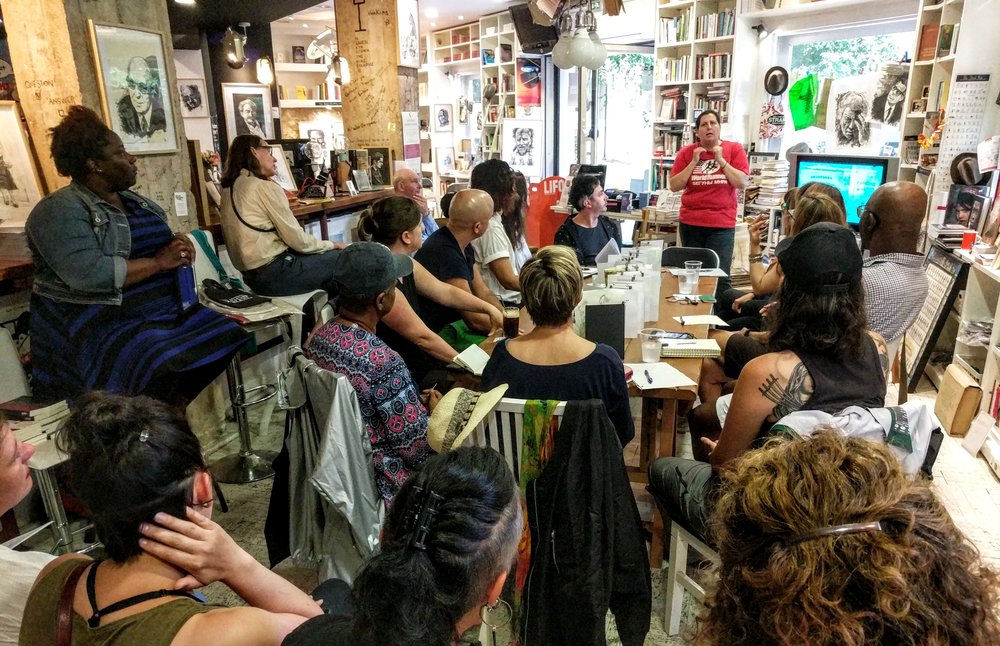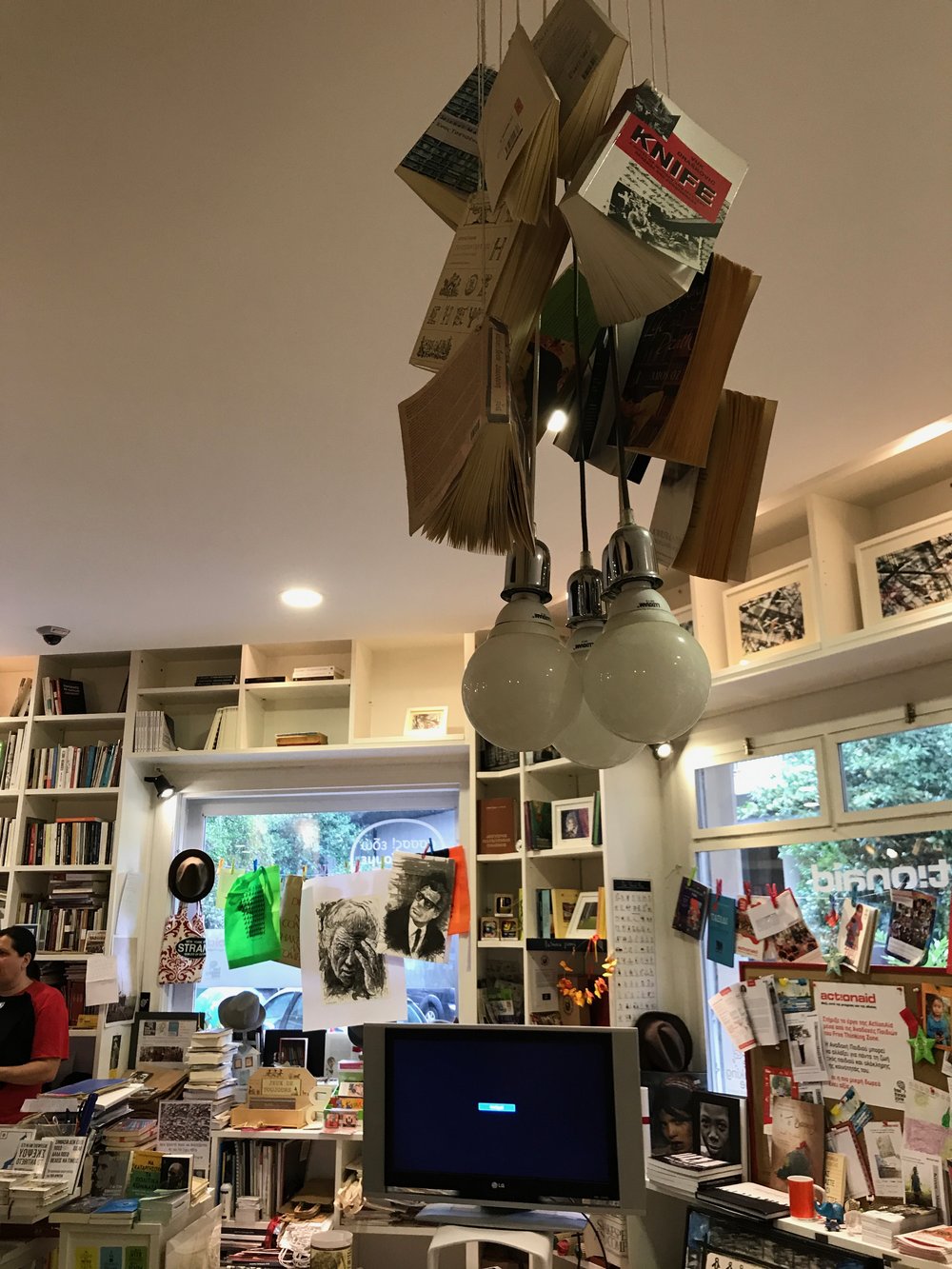Navigating the Free Thinking Zone: A Symposium in Athens
November 16, 2017
by Carrie Kellerby, Cohort ’16
On a rainy Sunday morning in Athens, Greece, a group of IDSVA scholars, nomads of a summer residency, gathered for a symposium on mapping, borders, displacement, and hospitality. The aptly named Free Thinking Zone, an activist bookstore owned by Areti Georgilis hosted our event and made a poetic point of entry as we navigated the topographical intersections between art, philosophy, and contemporary politics.

The symposium featured presentations by IDSVA Director, Simonetta Moro, Elina Staikou, author of Deconstruction at Home: Metaphors of Travel and Writing, and Italian philosopher and video filmmaker, Giovanni Tusa. The temporal placement of the symposium between our recent visit to the Venice Biennale and that afternoon’s upcoming exploration of Documenta 14 proved to be a useful map in its own right. The presentations highlighted the long histories and complexities the world now faces regarding issues of nationalism, disruption, and the intense activity of migration caused by war, famine, and other traumas, both natural and manmade.
Simonetta Moro began the symposium with a reminder of just how closely entwined philosophy, art, and mapmaking are in Greek culture. In fact, it was Homer’s Iliad, that provided the first example of ekphrasis in Western literature with the depiction of Achilles’ shield, crafted by the divine artisan, Hephaestus. One could say that Homer’s description of the shield of Achilles was, in itself, a philosophical proposition, an attempt to mediate the dualistic natures of man, including peace and war, order and chaos, territories that still plague modern philosophers.
Moro also traced the origins of cartography to the early Greek philosopher, Anaximander of Miletus (610-546 BCE). Herodotus described Anaximander's map as a cylinder, like the top of a drum. The map was bifurcated by a line that ran through Delphi, the world's navel, with the habitable world, the Greek oikoumenê, confined by two narrow ribbons of land to the north and south of the Mediterranean Sea.
But why should mapping the known world be of importance to any philosopher, ancient or contemporary? The key, Moro revealed, is that mapping can blur the borders between the real, the imagined, and the desired, so that a map, like any metaphor, becomes a representation. And its accuracy, its interpretation, and its uses become subject to the vagaries of human influence and purpose.

Indeed, as Giovanni Tusa demonstrated, a map is also a tool of military intervention. It confines relationships into spatial dimensions—removing the complexity and nuances of alternative connections— to matters of strict geographical location. Thus borders become areas of defined difference, of alterity. This is why the idea of habitation takes on the hue of violence and interruption, and why border crossings are often seen as unwelcome transgressions.
Elina Staikou asked us to consider the state of hospitality today. Foreigners face violence and death in the very act of fleeing from violence and death. Staikou emphasized the number of lives lost by refugees since the Syrian crisis, thereby demonstrating that the problem is not a metaphorical one, but rather, a reality, which has become enmeshed in the tensions between the universal rights of humanity and the limited rights of citizenship granted by territorial institutions.
IDSVA’s Athens symposium focused on the social and political challenges facing nations confronted with migrating populations. Yes, the dilemma is real, but as we experienced with Documenta 14 and the Biennale, the experiences of nomadic interactions and negotiated cartography can be represented in a number of positive ways, demonstrating open gestures of alternative attitudes. “To welcome” is imprinted in the long traditions of the laws of hospitality, but it is also fraught with risk. While the dangers cannot be dismissed outright, the urgency of recuperating a functional hospitality seems imperative. Perhaps if borders were no longer defined by birth or by the static rules of citizenship, but by some other criteria, some kinds of risks might be defused. Hospitality goes back to the ancient world, as does the ritual undertaking of pilgrimage. Border crossing was once a respected activity, a rich cultural practice of exchange leading to regenerations of ideas and flights of innovation. The words of Simonetta Moro, Elina Staikou, and Giovanni Tusa helped remind us that without the stranger, there is no need for hospitality, and as an IDSVA nomad who experienced the inspirational gift of Greek hospitality, I would hate to see such a rich tradition forced into extinction.
